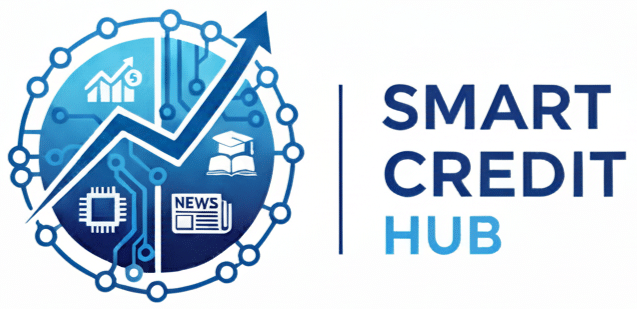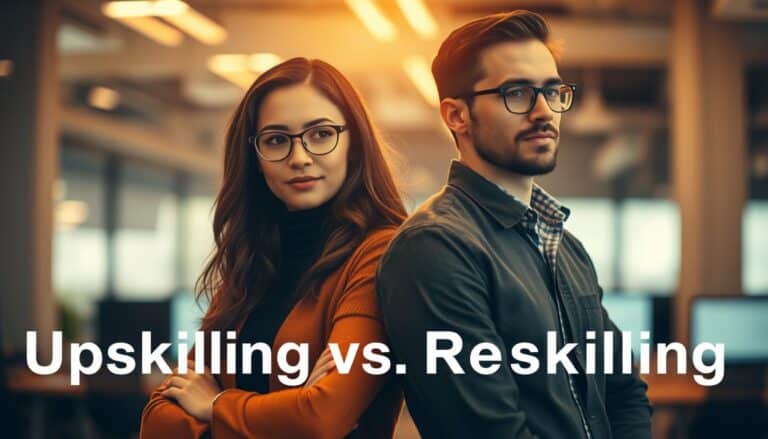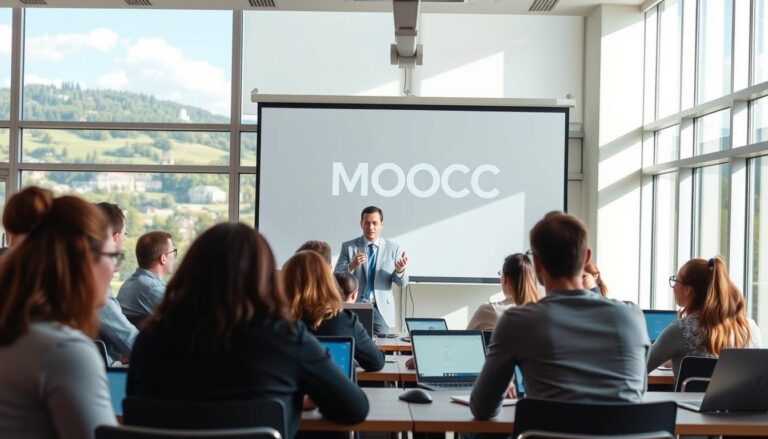By 2030, nearly 50% of workers in the U.S. will need to learn new skills. This is because automation and digital progress are changing our jobs. This fact shows how key lifelong learning has become.
Industries like manufacturing and healthcare are quickly adopting AI and cloud tech. As a result, jobs are changing faster than how we traditionally learn new skills. Studies from the Bureau of Labor Statistics show a growing need for reskilling.
Related content:
You will stay on the same website.
Thanks to federal and state programs, and community colleges, there are now more chances for lifelong learning. These opportunities help workers stay current and companies keep their best people.
Learning all through life is about more than just keeping a job. It improves your chances of getting hired, personal growth, and being a part of your community. It also helps you stay strong during tough economic times and big cultural shifts.
This piece offers guidance for professionals, students, employers, and community groups. It details practical steps and solid reasons to keep learning, no matter your age.
What is Lifelong Learning?
Lifelong learning is the continuous, voluntary effort to gain knowledge, for personal or job reasons. It includes formal education, quick classes, guidance, and independent projects. These help grow useful skills and curiosity over a lifetime.
Definitions and Concepts
Lifelong learning is defined as an ongoing, self-driven process. It combines traditional schooling, like degrees and certifications, with other ways of learning. For example, workshops, online content, and learning from peers are part of it.
It involves improving your thinking, being tech-savvy, getting better at communicating, solving problems, and learning particular subjects. These skills allow people to adapt to new jobs and the changing work world.
Learning can happen in a classroom, online, through short-term credentials, or at work. Places like employers, community colleges, libraries, and nonprofits provide structured learning paths. Self-learning helps bridge the gap between these opportunities.
Historical Context
In the 20th century, the push for lifelong education grew, driven by UNESCO and movements focused on educating adults. These early efforts linked education with moving up socially and being active in the community.
As the work world evolved, the need for ongoing learning became more pressing. Public programs and policies started to support lifelong learning. They made it easier to get credit for what you learn and to have different kinds of learning recognized.
| Era | Driver | Typical Offerings | Impact |
|---|---|---|---|
| Early 20th century | Industrialization and civic reform | Adult night schools, literacy campaigns | Broadened access to basic education |
| Mid 20th century | UNESCO and policy shifts | Adult education frameworks, community programs | Recognized lifelong education as a public good |
| Late 20th century | Changing labor markets | Continuing education at universities, vocational retraining | Linked learning to employability |
| 21st century | Digital transformation | Online courses, micro-credentials, employer-led training | Expanded access and created flexible lifelong learning programs |
The Need for Lifelong Learning Today
Technology and global connections are changing our work and lives. Workers, managers, and educators now need new tech skills, cultural understanding, and the ability to keep learning. These changes show why lifelong learning is key for our careers and our country’s success.
Tools like automation and artificial intelligence are changing our jobs. Some jobs are disappearing, but others in data analysis and digital services are booming. The U.S. Bureau of Labor Statistics reports big job growth in healthcare, tech, and renewable energy.
Employers want workers who keep learning and can adapt. Workers need to know things like data analysis, basic programming, and how to use cloud services. Being able to work with both people and machines is becoming more important.
The world is more connected, making work more complex. Working with people from different cultures and places means we need good communication and understanding of global standards. Lifelong learning helps people get these skills, which employers really value.
Our country’s ability to compete depends on workers keeping their skills up-to-date. Groups like the OECD and the World Economic Forum say learning all the time is essential for innovation. Workers who keep learning can help keep the economy stable by adapting quickly to changes.
Whether everyone can access learning is important. Making lifelong learning affordable and open to all can help reduce inequality. Otherwise, the gap in skills could get wider, leaving some people behind. Good programs focus on reaching those who need help the most and provide extra support.
The next table shows which jobs are growing or shrinking, what skills you need, and how lifelong learning can help fill the gaps.
| Labor Trend | Skills in Demand | Examples of Lifelong Learning Initiatives | Impact on Workers |
|---|---|---|---|
| Growth in healthcare and tech roles | Data literacy, clinical tech skills, cloud tools | Community college certificates, employer-sponsored bootcamps | Faster job placement, career mobility |
| Decline in routine clerical jobs | Digital workflow management, critical thinking | Online micro-credentials, library-led courses | Reskilling pathways into growing fields |
| Rise of remote and multicultural teams | Cultural competence, language skills, collaboration tech | University continuing education, language apps with instructor support | Improved team outcomes, global career options |
| Shift to renewable energy and green tech | Technical trades, regulatory knowledge, project management | Apprenticeships, public-private training partnerships | Local job creation, long-term career paths |
Benefits of Lifelong Learning
Lifelong learning has huge benefits in life and work. People who keep learning feel mentally healthier and more satisfied at their jobs. They also take part more in community activities. On the other hand, companies that support ongoing learning see more innovation, loyalty, and teamwork.
Personal Development
Continued learning is great for your brain and your mood. Studies show that staying mentally active can slow down brain aging and make you better at solving problems. Taking up new hobbies, joining community classes, or online learning can make you more confident and happy.
Career Advancement
Staying current with your skills and knowledge is key to moving up in your career. Special training programs, like continuing education for doctors, legal education for lawyers, and tech certifications, help people meet job requirements. This makes it easier to get promoted or change careers.
Enhanced Adaptability
People who embrace lifelong learning adapt quicker to changes at work. Employers prefer employees who are willing to learn new ways of working. Also, engaging in learning programs can help you find a new job faster and feel more secure in your career.
Wider access to lifelong learning helps communities too. When places like libraries and colleges offer courses, everyone benefits. People vote more and communities grow stronger.
| Area | Tangible Outcome | Example Pathway |
|---|---|---|
| Health & Well-being | Reduced cognitive decline; improved mood | Adult education classes; brain-training workshops |
| Earnings & Employment | Higher long-term earnings; faster re-employment | IT certifications; vocational reskilling programs |
| Social Capital | Stronger civic participation; community leadership | Library programs; civic education courses |
Lifelong Learning for Professionals
Today’s professionals must continuously learn to keep up. Lifelong learning lets them stay relevant, explore new areas, and deepen their expertise. Employers, training vendors, and universities help create clear paths that align with career goals.
Reskilling and Upskilling
Reskilling and upskilling meet different needs. Reskilling helps someone switch careers, like moving from factory work to cloud support. Upskilling lets someone get better at their current job, such as a marketer mastering advanced analytics.
Leading providers like LinkedIn Learning, Coursera for Business, and Udemy Business offer widespread corporate learning. Professional groups and executive education at universities also provide specialized learning paths and certifications.
Credentials like Project Management Professional or AWS Certified Solutions Architect can lead to promotions. They are proof of your skills and knowledge.
Networking Opportunities
Networking can boost learning through mentorship and sharing tips. Conferences and meetups offer hands-on learning. Online groups like GitHub and LinkedIn allow for global connections.
Some companies also offer programs to support learning. Programs from Starbucks and Amazon help employees study while they work. This leads to happier, more loyal employees.
| Option | Primary Benefit | Typical Providers | Best For |
|---|---|---|---|
| Corporate Training | Scalable skill delivery and alignment with company goals | LinkedIn Learning, Coursera for Business, Udemy Business | Workforce-wide upskilling and role transitions |
| Professional Associations | Accredited content and industry standards | American Bar Association, American Nurses Association | Licensing, continuing education credits, specialized practice |
| University Executive Education | Credentialed certificates and micro-credentials | Colleges and universities offering executive programs | Senior leaders and specialists seeking credentialed study |
| Online Communities | Peer support, code review, and on-demand problem solving | GitHub, Stack Overflow, LinkedIn groups | Day-to-day troubleshooting and mentorship |
| Employer-Sponsored Programs | Tuition support and defined career pathways | Starbucks College Achievement Plan, Amazon Career Choice | Employees pursuing degrees or certificates while working |
Lifelong Learning for Students
Students benefit from learning habits in K-12 that last through college and careers. Tools like project-based learning, flipped classrooms, and thinking about thinking help them grow beyond school. These methods make being curious and thoughtful a normal part of life.
Embracing New Learning Methodologies
Blended learning combines online lessons with traditional class time to encourage independence. Websites like Coursera and edX offer massive open online courses for studying big ideas. In competency-based education, learning actual skills matters more than just sitting in class.
Internships and co-ops link what’s learned in class to real work. These experiences tackle real problems. They boost lifelong learning abilities and build confidence in changing jobs or fields.
Fostering Critical Thinking
Some curricula push students to ask questions, test their ideas, and think about the evidence. Teaching about data and media helps students recognize bias and check facts. This clears up confusion in our complex world.
Debates, research projects, and reviewing peers’ work teach how to solve problems. Guidance from counselors and career services points to lifelong learning chances and internships.
Skills in communicating, working as a team, and using digital tools help with changing careers. Schools stress these skills so students are ready to keep learning and grow confidently all life long.
The Role of Employers in Lifelong Learning
Employers are key to worker growth. They decide who gets to learn more and how. Companies focusing on learning build strong teams. They keep their employees longer and solve skills shortages quicker than others.
Encouraging continuous education
Good leadership encourages a culture of learning. Big names like Microsoft and Amazon set aside days for learning. They also pay for studies and offer courses. This shows they value growth as much as profits.
Mentorship and learning together are powerful. If bosses learn, employees are likely to do the same. Rewarding employees for learning encourages them to keep at it.
Providing resources and incentives
Helping with costs encourages learning. Paying for courses and giving time to study helps remove obstacles. Programs that combine work with learning are great for technical jobs.
Incentives are important, especially when money is tight. Bonuses, promotions, and recognition drive employees to learn more. For example, hospitals support nurses to keep improving, which maintains high care standards.
Measuring impact
Firms measure success to improve their programs. They look at how many finish courses, if employees move up, and if they’re more engaged. These measures help show the value of learning to the business.
Models that work
- Tech firms pair apprenticeships and mentorship for quick role fills.
- Health systems offer coursework and hands-on labs for staff updates.
- Retail stores give small credentials for moving staff to higher positions.
When employers support ongoing education and clear rewards, employees gain needed skills. This results in a workforce that can handle future challenges.
Online Learning Platforms
Online learning platforms have changed the way Americans get their education. They offer many types of learning, from full degrees to quick lessons. People like them because they are flexible, cheaper, and they fit well with work and family schedules.
Leading the pack are several well-known providers. Coursera and edX team up with universities for degrees and certificates. Udemy and Skillshare focus on specific skills. LinkedIn Learning, Codecademy, Pluralsight, and Khan Academy target career, coding, and basic education. Harvard Extension School and Stanford Online offer university courses for credit.
They have full degrees, short courses, certificates, and micro-credentials. Many are backed by industry, making them valuable for careers. This mix lets people keep learning throughout their lives, helping them reach their career goals.
Studies suggest the best courses involve active learning, regular feedback, and talking with peers. Short courses fit well into adults’ busy lives. Mixing online learning with some face-to-face sessions can make learning stick better.
One big plus is how accessible these platforms are. They reach people all over, including working adults and those with family responsibilities. This makes lifelong learning easier to get than traditional degrees in many cases.
Still, there are hurdles. Not everyone has the internet or devices needed. The quality of courses can vary. Also, some jobs might not value online degrees as much, which can influence hiring choices.
| Provider | Typical Offerings | Best For |
|---|---|---|
| Coursera | Degrees, professional certificates, specializations | Academic credentials and career pivots |
| edX | MicroMasters, full degrees, verified certificates | University-style courses and credit-bearing programs |
| Udemy | Short courses, skill tutorials, lifetime access | Practical skills and hobby learning |
| LinkedIn Learning | Professional certificates, soft skills, business courses | Career development and workforce training |
| Khan Academy | Free foundational lessons, K–12 and test prep | Early education and remediation |
| Skillshare | Creative workshops, project-based classes | Design, photography, and creative professions |
| Codecademy | Interactive coding tracks and projects | Programming fundamentals and job-ready coding skills |
| Pluralsight | Technology courses, skill assessments, labs | IT professionals and tech upskilling |
| Harvard Extension School / Stanford Online | University extension courses, certificates, credit options | Academic advancement with institutional recognition |
Community Learning Initiatives
Community learning initiatives turn places we know into centers of learning. Public libraries, community colleges, and other groups make learning accessible for everyone. They offer programs that fit different schedules and needs.
Importance of Local Engagement
Getting involved locally helps build trust and keeps programs in tune with what people need. Libraries offer workshops on using computers and the internet. Community colleges have courses for adult education that relate to jobs in the area. Programs for seniors are provided by AARP’s Lifelong Learning.
Efforts in the community help people who often get left out. These include reduced fees, help with childcare, and classes at night or on weekends. Groups connected to churches or those in neighborhoods also give career advice and guidance.
Collaborative Learning Opportunities
Collaborative learning helps people learn from each other. It builds networks and friendships. Group studies, spaces for making, hackathons, and volunteering are ways to learn by doing. Classes on community involvement encourage discussion and develop local leadership skills.
Community colleges provide job training workshops. Libraries set up group learning and technology sessions. Employers might fund hackathons or apprenticeships, linking learners to actual work. These approaches make education a part of life and strengthen our communities.
Barriers to Lifelong Learning
Many adults face real challenges when they try to keep learning. They often deal with money issues and tight schedules. Other troubles include not enough digital access, worries about credentials moving across borders, and beliefs that school should stop early.
Financial Constraints
Learning costs can be high, and not working to learn adds stress for working students. In many places, there’s not enough money to help with education. These issues are big roadblocks to lifelong learning.
Help is available through student aid, company programs like those from Starbucks and Amazon, and scholarships. Programs like workforce development grants and tax breaks for education make learning more affordable. They encourage people to sign up for classes.
Time Management Issues
Juggling a job, family, and school means not having much free time. This makes learning a low priority for many. Finding flexible learning options becomes crucial for growth.
Tools like short lessons, courses you can take bit by bit, and classes at night or on weekends help. Employers giving employees time to learn is a big support. Planning and focusing on important skills make the most of limited time.
Not having access to the internet is still an issue for many. But, public libraries, community colleges, and non-profits provide affordable learning tools. Mobile apps and local study groups also help by cutting down on travel time and costs.
Changes in policies can break down these learning barriers. More public money, better rewards for companies, and easier transfer of credentials can increase learning. When the government and businesses work together, more people can keep building their skills.
Both personal efforts and big changes can make learning easier. Using community resources, picking specific courses, and taking advantage of company learning time help reduce costs and manage time. These actions help learners keep improving in their careers.
The Future of Lifelong Learning
The world of adult education is changing quickly. We now see new ways of getting credentials, and companies deciding who gets hired. There’s also a mix of online and in-person learning. All these factors are making it easier for people to plan their careers over a lifetime.
Trends and Predictions
Expect more value from micro-credentials and stackable certificates. Big names like Google and IBM showcase short courses that lead to actual jobs. This means employers are starting to prefer skills over just having a degree.
Learning online or with a mix of online and offline will open doors to more training. Partnerships between public and private sectors will help fund programs. These collaborations will include community colleges, non-profits, and companies like Amazon and Coursera. They aim to help people move into new careers mid-way through their life.
Learning will be tailored to each person. Technology will help create a learning path that suits an individual’s speed, strengths, and job goals. This approach will make earning certificates quicker and clearer.
The Role of AI and Technology
AI will bring smarter tutoring, suggestions for study content, and checks on skills. Tools from Microsoft and OpenAI will make study plans that fit how a person is doing. These plans will include practices tailored to their needs.
Using VR, learners can practice skills in lifelike settings. Medical students and technicians already benefit from this for surgeries and maintenance work. It makes learning complex skills easier and safer.
We must look out for ethical and practical issues, like keeping data private and avoiding bias in programs. It’s also important to make sure everyone has fast internet and the right devices. Plus, we need to teach people how to use these new AI tools.
It’s up to those in charge to make rules clear for digital credentials and to invest in better internet for all. This will make it easier for both employers and learners to trust these new types of certifications. It should also make it easier for more people to join in on lifelong learning.
Lifelong Learning in Different Fields
Lifelong learning is key in different careers. It helps adults stay up-to-date, show their skills, and work well with others. Education, healthcare, and IT offer examples of how to keep growing.
Education
Teachers need ongoing training to use new teaching methods and tech. They earn credits through state programs and learn together in groups. This helps them keep up with changes and help their students more.
Groups like the American Educational Research Association provide resources and help with certifications. Teachers can also learn from watching each other teach and using what they learn in their classes.
Healthcare
Healthcare workers must stay current with medical news and best practices. They take courses to keep their licenses and give the best care.
Training with simulations, learning from different professions, and joining groups like the American Medical Association help them make better decisions. Lifelong learning in healthcare focuses on concrete results and keeping patients safe.
Information Technology
IT changes fast, requiring new skills in areas like cybersecurity and cloud computing. Short programs and certifications from big tech companies help improve skills quickly.
Companies and tech groups like the Association for Computing Machinery value learning by doing and proving skills through projects. Lifelong learning in IT combines solo study and formal credentials to advance careers.
Lessons from different fields show the benefits of hands-on assessments and simulation training, like those in medicine. These approaches are also effective in other industries for practicing real situations and checking how well teams perform.
- Professional groups set the standards and guide learning.
- Simulation and skill checks help make sure skills can be used in real life.
- Learning together improves teamwork across different jobs.
Case Studies in Lifelong Learning
This study showcases examples and results from programs where continuous learning changed careers and enriched talent pools. Through corporate, community, and nonprofit examples, we see how these programs offer practical lessons and adaptable methods.
Corporate training programs
At Amazon, the Career Choice initiative funds training in in-demand fields. It’s led to more people staying and growing in their jobs. AT&T’s Future Ready program combines online learning and real-work projects. This helps employees move into digital roles, bringing wage increases and more promotions. Google’s Career Certificates fast-track people into IT and project management and show strong job placements for those who graduate.
These programs from corporations share a few key elements. They’re in tune with local job markets and link up with educational partners. They’re also clear about their goals and support learners with tuition or paid study time. Tracking results over the years, these programs show bigger benefits for job stability and career growth than shorter courses.
Adult education success stories
In California and Texas, partnerships with community colleges have helped adults become skilled technicians and nurses. Veterans are making smooth moves into civilian jobs through specialized healthcare and logistics training. Organizations like Year Up and Per Scholas achieve high job placements by mixing classes with internships and extra support.
Studies tracking these adult learning programs reveal big gains. Within a year to three years after finishing, many report better jobs and salaries. Adding services like child care, transport help, and career advice leads to more graduates and successful job placements.
Metrics, transferability, and best practices
- Important metrics include completion, job placement, salary increases, promotions, and job retention from 12 to 36 months.
- To do it right: match lessons to job market needs, merge class and work learning, offer extra supports, and share results to help refine programs.
- For spreading success: smaller employers might team up with colleges, big companies might share or jointly run training models, and community groups can offer services that keep learners on track.
A simple table below compares different types of programs, who they’re for, and what they achieve. It makes it easier to see the differences at a glance.
| Program Type | Target Population | Primary Outcomes |
|---|---|---|
| Employer-sponsored credentialing | Incumbent employees | Higher internal mobility, reduced turnover, wage growth |
| Community college partnerships | Adult learners, career changers | Industry credentials, job placement in local markets |
| Veteran-focused training | Service members and veterans | Faster civilian employment, transferable skills |
| Nonprofit upskilling programs | Underserved populations | Certification plus internships, increased entry-level hires |
Looking at these lifelong learning and company-led programs, we see the impact of thoughtful planning and ongoing checks. The stories of adult education show how such models can be shaped to fit different groups’ needs and resources.
Measuring the Impact of Lifelong Learning
To understand lifelong learning’s value, we need clear measures and thoughtful plans. Programs like those from Coursera, LinkedIn Learning, and local colleges offer different ways to show benefits. To really measure its impact, we have to look at both short-term and long-term changes in careers and society.
Key areas to track are how many people finish courses, get certificates, improve at work, gain new skills, and enjoy their learning journey. These factors help funders, employers, and students see how effective the programs are.
Key Performance Indicators
We need to set clear goals for lifelong learning. Start with how many people finish courses and get certificates. Then, see if they get jobs or better positions because of what they learned.
Looking at raises and more responsibilities at work helps us see if people are moving up in their careers. Adding how happy learners are and how well they’ve mastered skills tells us even more. By comparing skills before and after courses, we get a fuller picture.
Long-Term Outcomes
To see the full effects of lifelong learning, we have to follow people over time. By connecting course data to job market figures, we can spot trends in pay and employment. Surveys and feedback from companies also show us how people’s careers grow over the years.
We also look at things like health, community involvement, and creativity. These factors show us how learning affects not just wealth, but our lives and communities as a whole.
But it’s tough to pinpoint learning’s exact impact, keep data private, and match up different qualifications. Solving these challenges means using standard measures, combining numbers and stories, and working together with schools, businesses, and government.
Developing a Lifelong Learning Plan
Making a plan helps move from dreaming to doing. It links learning to career moves, passions, or community roles. This makes growth ongoing and something you can see.

Setting clear goals is key. Use SMART: specific, measurable, achievable, relevant, time-bound. For example, get a PMP in nine months, finish a Coursera course in six months, or enhance speaking skills with Toastmasters this year.
A skills check sets the stage. Write down what you can do, get feedback from others, and see what skills are in demand. This helps choose which learning paths will pay off.
Managing time and money is crucial. Use blocks of time, short lessons, and weekend studies to keep moving forward. For money, look into employer help, scholarships, or grants.
Tracking progress is also important. A portfolio of what you’ve learned, certificates, and thoughts keeps you focused. Regular check-ins help shift goals, manage resources, and celebrate achievements.
Identifying resources is about having many tools. Classes, online courses, associations, libraries, podcasts, and books offer a wide range. Free or affordable options like Khan Academy fit even tight budgets.
Keeping balance is vital. Aim for a realistic pace with micro-credentials, night classes, or work-sponsored learning. Mixing formal and informal learning suits any schedule.
Tracking progress means watching simple indicators. Note study hours, credentials, finished projects, and peer feedback. Revise your plan every six months to stay on track with your goals and the job market.
| Goal Type | Example | Resource | Timeframe |
|---|---|---|---|
| Career Certification | Earn PMP | PMI courses, Coursera prep, employer tuition | 9 months |
| Technical Skill | Complete data analytics specialization | Coursera, edX, local community college | 6 months |
| Communication | Improve public speaking | Toastmasters, library workshops, YouTube tutorials | 4 months |
| Foundational Knowledge | Refresh statistics and math | Khan Academy, community college, textbooks | 3 months |
| Ongoing Learning | Monthly skill updates | Podcasts, webinars, professional association events | Ongoing |
Mixing formal and informal learning pathways makes for solid outcomes. Setting clear goals and following through ensures continual growth becomes possible.
Conclusion: Embracing Lifelong Learning
Lifelong learning helps us adapt to change. It makes us more competitive in the economy. Individuals and organizations should embrace it to remain strong and relevant.
Call to Action
Everyone in the U.S. should aim for personal and community growth. Begin by assessing your skills. Then, sign up for a course or join a learning group soon.
At work, look into tuition benefits. Push for policies that give you time to learn.
Final Thoughts
Lifelong learning is a duty we owe to ourselves and others. It makes our communities better and promotes innovation. It leads to a stronger workforce and healthier economies.



